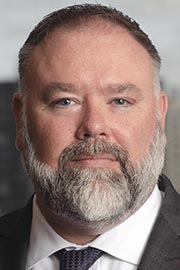

 Someone recently observed that many stakeholders have fallen victim to a "chilling effect" resulting from fear of retaliation by the rich and powerful bullies currently infecting the multistakeholder community, ICANN, and Internet governance. I related to what I was hearing because I've been personally targeted and libelously attacked and it is deeply dismaying enough having to worry about threats to revenue and reputation along with other harmful effects of such thuggery.
Someone recently observed that many stakeholders have fallen victim to a "chilling effect" resulting from fear of retaliation by the rich and powerful bullies currently infecting the multistakeholder community, ICANN, and Internet governance. I related to what I was hearing because I've been personally targeted and libelously attacked and it is deeply dismaying enough having to worry about threats to revenue and reputation along with other harmful effects of such thuggery.
 Back in the 1980s, everyone used the Lotus 1-2-3 spreadsheet on their PCs. In 1989, Borland released a competitor, Quattro Pro. It used the same menu commands as 1-2-3 so that users could import their 1-2-3 spreadsheets with keyboard macros. Lotus sued Borland, and after a loss in the district court, Borland won on appeal, arguing that the keyboard commands are a "method of operation" and not subject to copyright. Lotus appealed to the Supreme Court...
Back in the 1980s, everyone used the Lotus 1-2-3 spreadsheet on their PCs. In 1989, Borland released a competitor, Quattro Pro. It used the same menu commands as 1-2-3 so that users could import their 1-2-3 spreadsheets with keyboard macros. Lotus sued Borland, and after a loss in the district court, Borland won on appeal, arguing that the keyboard commands are a "method of operation" and not subject to copyright. Lotus appealed to the Supreme Court...
 In a recent article, Is ICANN Staff Misleading the Board Into Violating Obligations to the U.S. Government, I wrote: The referenced Memorandum of Understanding (MOU) is the vehicle by which the U.S. government delegates to ICANN the responsibilities for overseeing the technical management of the Internet's Domain Name System (DNS)... This is important for many reasons, and much remains to be analyzed for additional context that can help expose the rot at the Internet's root.
In a recent article, Is ICANN Staff Misleading the Board Into Violating Obligations to the U.S. Government, I wrote: The referenced Memorandum of Understanding (MOU) is the vehicle by which the U.S. government delegates to ICANN the responsibilities for overseeing the technical management of the Internet's Domain Name System (DNS)... This is important for many reasons, and much remains to be analyzed for additional context that can help expose the rot at the Internet's root.
 While Panels under the UDRP and judges under the ACPA draw upon a similar body of principles in determining infringement -- both mechanisms, after all, are crafted to combat cybersquatting -- and though arbitration panels and judges undoubtedly view alleged tortious wrongdoing by abusive registrations of domain names through similar lenses and apply laws that may be outwardly similar, each protective mechanism has developed its own distinct and separate jurisprudence.
While Panels under the UDRP and judges under the ACPA draw upon a similar body of principles in determining infringement -- both mechanisms, after all, are crafted to combat cybersquatting -- and though arbitration panels and judges undoubtedly view alleged tortious wrongdoing by abusive registrations of domain names through similar lenses and apply laws that may be outwardly similar, each protective mechanism has developed its own distinct and separate jurisprudence.
 Recently, I had time to reflect on various matters after the alternator in my vehicle decided that the middle of a mountain pass was the appropriate time and place to go to that great big pick-and-pull scrapyard in the sky while leaving me stranded with no cell signal on the side of the road in the middle of nowhere. Until that point, I had been seriously considering applying to ICANN's Nominating Committee for one of the three open seats on ICANN's Board of Directors.
Recently, I had time to reflect on various matters after the alternator in my vehicle decided that the middle of a mountain pass was the appropriate time and place to go to that great big pick-and-pull scrapyard in the sky while leaving me stranded with no cell signal on the side of the road in the middle of nowhere. Until that point, I had been seriously considering applying to ICANN's Nominating Committee for one of the three open seats on ICANN's Board of Directors.
 Most of the single-character .com labels were initially registered in 1993 by Dr. Jon Postel while performing work pursuant to a contract with, and funded by, the U.S. government and are currently assigned to a "shell registrar" created and controlled by ICANN. This shell - which is the 376th entry on ICANN's list of accredited registrars - is misleadingly identified as the IANA registrar while being engaged in the illicit warehousing of domain names for speculative purposes.
Most of the single-character .com labels were initially registered in 1993 by Dr. Jon Postel while performing work pursuant to a contract with, and funded by, the U.S. government and are currently assigned to a "shell registrar" created and controlled by ICANN. This shell - which is the 376th entry on ICANN's list of accredited registrars - is misleadingly identified as the IANA registrar while being engaged in the illicit warehousing of domain names for speculative purposes.
 On March 13, 2019, I published an article on CircleID, Portrait of a Single-Character Domain Name, that explored the proposed release and auction of o.com, a single-character .com domain name that was registered in 1993 and assigned to the Internet Assigned Numbers Authority (IANA) by Dr. Jon Postel. Although the National Telecommunications and Information Administration (NTIA) has since raised serious objections...
On March 13, 2019, I published an article on CircleID, Portrait of a Single-Character Domain Name, that explored the proposed release and auction of o.com, a single-character .com domain name that was registered in 1993 and assigned to the Internet Assigned Numbers Authority (IANA) by Dr. Jon Postel. Although the National Telecommunications and Information Administration (NTIA) has since raised serious objections...
 On July 2, 2002, Damien Cave published an interview on Salon.com with John Gilmore, "original 'cypherpunk' and all-around Internet supergeek," titled "It's time for ICANN to go." In this wide-ranging interview, Gilmore -- an early employee of Sun Microsystems who also co-founded Cygnus Software (acquired by Red Hat) and was an early supporter of the Electronic Frontier Foundation and the Internet Society (ISOC) -- offered blunt insight and eye-opening historical detail...
On July 2, 2002, Damien Cave published an interview on Salon.com with John Gilmore, "original 'cypherpunk' and all-around Internet supergeek," titled "It's time for ICANN to go." In this wide-ranging interview, Gilmore -- an early employee of Sun Microsystems who also co-founded Cygnus Software (acquired by Red Hat) and was an early supporter of the Electronic Frontier Foundation and the Internet Society (ISOC) -- offered blunt insight and eye-opening historical detail...
 I was in a conversation with a close friend the other day, you know the kind where you have been friends for so long that you have endured each other experimenting with changed politics, evolving religion, and if you are unlucky, flirtations with multilevel marketing. We were discussing politics that day, which is not unusual given our ancient friendship and the recent change at the helm of the United States.
I was in a conversation with a close friend the other day, you know the kind where you have been friends for so long that you have endured each other experimenting with changed politics, evolving religion, and if you are unlucky, flirtations with multilevel marketing. We were discussing politics that day, which is not unusual given our ancient friendship and the recent change at the helm of the United States.
 Like much of how the Internet is governed, the way we detect and remove child abuse material online began as an ad hoc set of private practices. In 1996, an early online child protection society posted to the Usenet newsgroup alt.binaries.pictures.erotica.children (yes, such a thing really existed) to try to discourage people from posting such "erotica" on the assumption that the Internet couldn't be censored.
Like much of how the Internet is governed, the way we detect and remove child abuse material online began as an ad hoc set of private practices. In 1996, an early online child protection society posted to the Usenet newsgroup alt.binaries.pictures.erotica.children (yes, such a thing really existed) to try to discourage people from posting such "erotica" on the assumption that the Internet couldn't be censored.